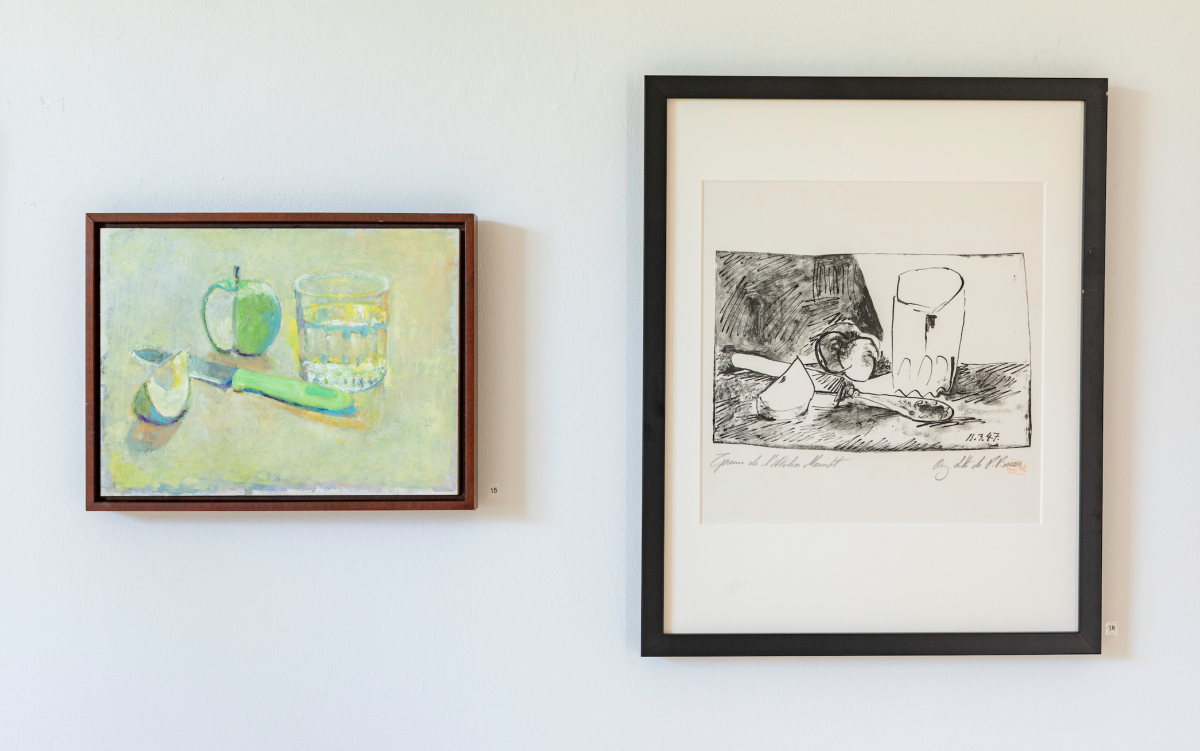Opportunities to see works by a modern master of art in an intimate gallery setting do not often arise in our part of the world. Les Yeux du Monde provides just that with its current exhibition, “Picasso, Lydia, & Friends, Vol. V.”
The show brings together six prints by Pablo Picasso with contemporary works from eight artists influenced by the aesthetics and academic contributions of the Spanish artist and the acclaimed Picasso scholar Lydia Csato Gasman, respectively. The collected work functions as a way to share world-class masterworks with the Charlottesville public, while also honoring the legacy of Gasman, LYDM founder Lyn Bolen Warren’s late mentor.
“Apart from Picasso—whose work is included in the exhibition, given it was the focus of Gasman’s scholarship—each of the exhibiting artists personally knew Gasman, many having been her colleagues in UVA’s art department,” says Les Yeux de Monde Director Hagan Tampellini. “Each credits Gasman or Picasso with influencing their work or thought in some way, which can be felt in the experience of the show.”
Picasso’s prints present the viewer with unexpected images. Three still-life lithographs—atypical examples from the artist’s oeuvre—depict fruit, flowers, and glassware, with evidence of the artist’s hand used to manipulate the ink. Two lyrical etchings, illustrating Picasso’s muse Marie-Thérèse Walter with delicate line work, flank a visually heavy aquatint portraying a goat skull. The juxtaposition of youth and vivacity is striking against the weight of inevitable decay.

The goat skull is complemented by Russ Warren’s “Faces,” a large-scale acrylic painting featuring dozens of skull-like visages. The notion of death is echoed again in Gasman’s “The Angel of History,” which employs thick impasto, gestural marks, and a saturated palette of colors. A sheet of aluminum serves as both the sky and a stand-in for aircraft engaged in wartime bombings. The depiction of angels is carried over in a suite of elegant ink drawings by Sanda Iliescu, which also connect beautifully to Picasso’s etchings through similarity in line weight and simplicity of form.
Another exciting example of curation occurs between print and painting, where David Summers’ “New Light on Picasso’s Snack, plus Water” hangs next to Picasso’s “Pommes, Verre, et Couteau” (Apples, Glass, and Knife). Here we see how the artists attune to the same subject matter: Summers the painter traffics in the representation of light, while Picasso as printmaker is far more concerned with form.
Throughout the show, pops of vibrant color punctuate the visual rhythms produced by monochromatic prints, drawings, and paintings—alluding to acts of both love and violence. LYDM presents a balanced exhibition design keeping the viewer engaged, and seeking out both formal and thematic connections, in the disparate yet related works that grace the welcoming gallery space.
